Abstract
Conventional mice inoculated with Candida albicans per os were unable to maintain this organism in the intestinal tract as judged by decreasing numbers of yeast recoverable from feces. After inoculation with 107 cells/mouse, fecal counts ranged from 105 cells per g of feces to 5 × 103 cells per g of feces during a 12-day experimental period. Addition of various antibiotics to the drinking water did not result in any improvement in maintenance or stability of the gut population. A combination of X irradiation and administration of tobramycin or gentamicin, however, resulted in a stable population of C. albicans in the intestinal tract, with cell counts in the feces remaining constant at a level of about 106/g of feces for a period of 10 to 15 days. The usefulness of this model in assessing the effect of experimental drugs on C. albicans infections of the gut was demonstrated by the fact that treatment with a new antifungal antibiotic (A9145), amphotericin B, 5-fluorocytosine, or nystatin resulted in a reduction in the fecal counts of C. albicans from experimentally infected animals.
Full text
PDF
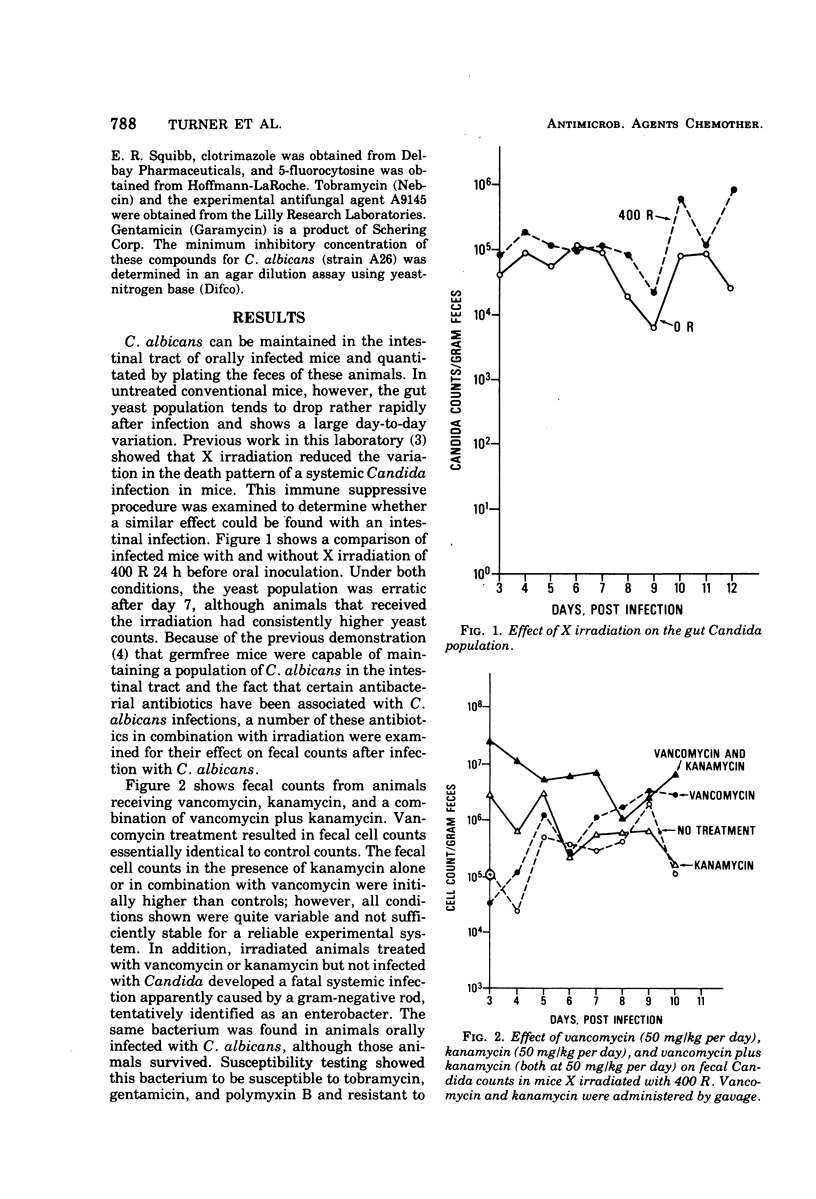
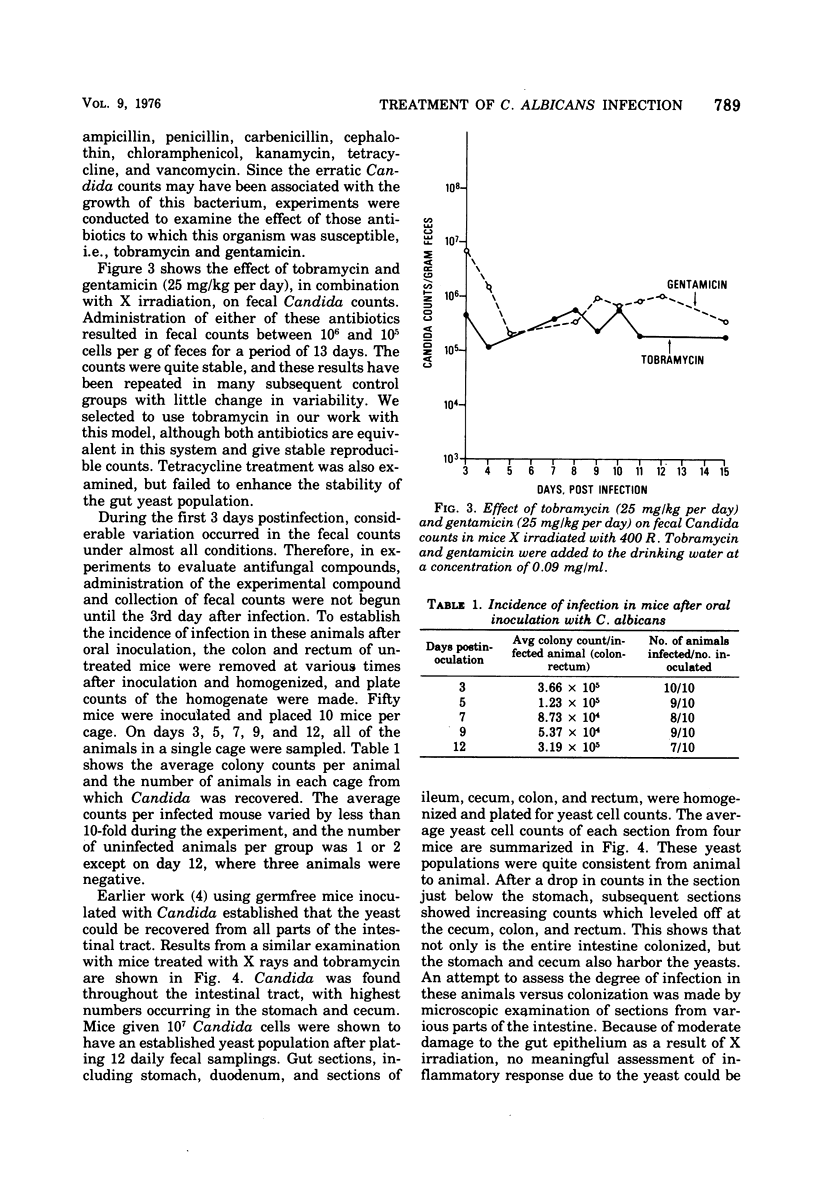
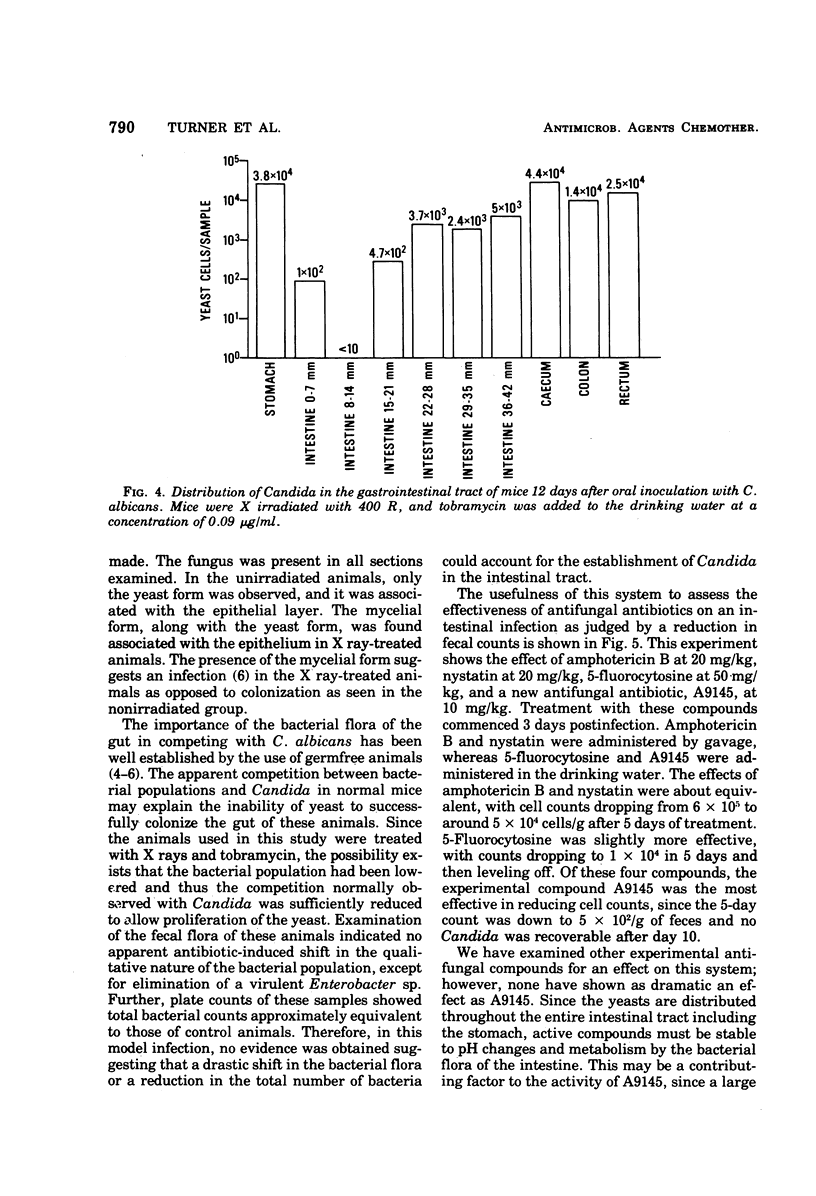
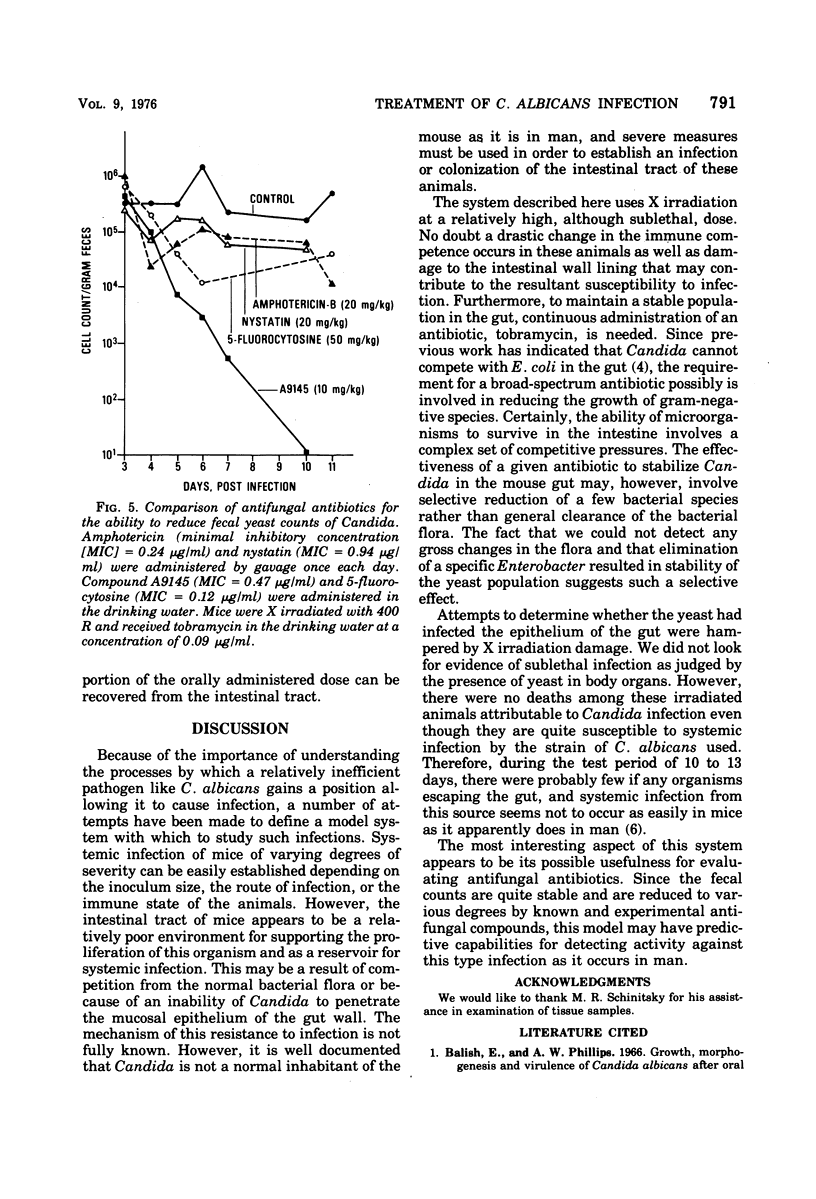
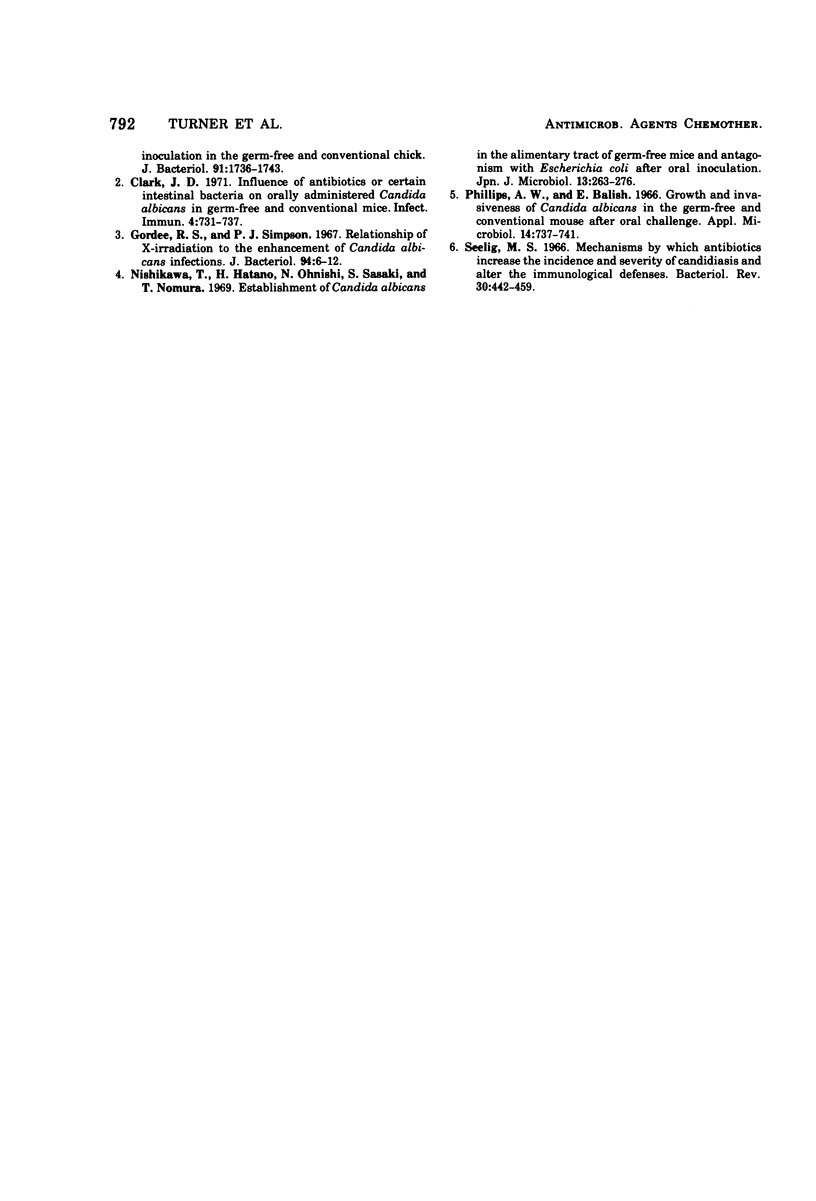
Selected References
These references are in PubMed. This may not be the complete list of references from this article.
- Clark J. D. Influence of antibiotics or certain intestinal bacteria on orally administered Candida albicans in germ-free and conventional mice. Infect Immun. 1971 Dec;4(6):731–737. doi: 10.1128/iai.4.6.731-737.1971. [DOI] [PMC free article] [PubMed] [Google Scholar]
- Gordee R. S., Simpson P. J. Relationships of x-irradiation to the enhancement of Candida albicans infections. J Bacteriol. 1967 Jul;94(1):6–12. doi: 10.1128/jb.94.1.6-12.1967. [DOI] [PMC free article] [PubMed] [Google Scholar]
- Nishikawa T., Hatano H., Ohnishi N., Sasaki S., Nomura T. Establishment of Candida albicans in the alimentary tract of the germ-free mice and antagonism with Escherichia coli after oral inoculation. Jpn J Microbiol. 1969 Sep;13(3):263–276. doi: 10.1111/j.1348-0421.1969.tb00466.x. [DOI] [PubMed] [Google Scholar]
- Phillips A. W., Balish E. Growth and invasiveness of Candida albicans in the germ-free and conventional mouse after oral challenge. Appl Microbiol. 1966 Sep;14(5):737–741. doi: 10.1128/am.14.5.737-741.1966. [DOI] [PMC free article] [PubMed] [Google Scholar]
- Seelig M. S. Mechanisms by which antibiotics increase the incidence and severity of candidiasis and alter the immunological defenses. Bacteriol Rev. 1966 Jun;30(2):442–459. doi: 10.1128/br.30.2.442-459.1966. [DOI] [PMC free article] [PubMed] [Google Scholar]


